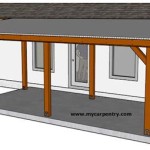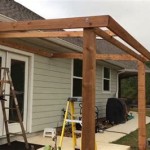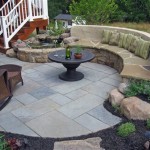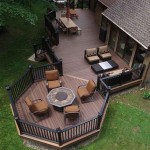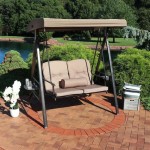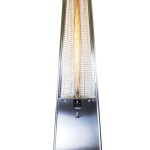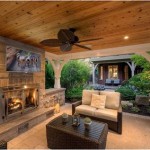How To Stop Birds From Pooping On Your Patio
Bird droppings on a patio can be an unsightly and unsanitary nuisance. Fortunately, several effective methods exist to deter birds and keep patios clean. These methods range from simple deterrents to more complex solutions, allowing homeowners to choose the best approach based on their specific needs and environment.
Visual Deterrents: One of the easiest ways to discourage birds from landing on a patio is to employ visual deterrents. These devices create the illusion of danger or discomfort, prompting birds to seek alternative perching spots. Reflective objects are particularly effective. Items like reflective tape, old CDs, or aluminum foil pie plates hung from strings can create flashes of light that birds find disturbing. Fake predators, such as plastic owls or hawks, can also be placed strategically on the patio. However, these may lose their effectiveness over time as birds become accustomed to their stationary presence. Moving the decoys periodically can maintain their deterrent effect.
Sound Deterrents: Auditory deterrents exploit birds' sensitivity to sound. Wind chimes or strategically hung metal objects can create noises that discourage birds from landing. Ultrasonic bird repellers emit high-frequency sounds that are generally inaudible to humans but irritating to birds. However, the effectiveness of ultrasonic devices is debated, and some research suggests that birds may habituate to the sounds over time.
Physical Barriers: Creating physical barriers can prevent birds from accessing desirable perching spots. Bird netting can be draped over areas where birds frequently congregate, such as railings or overhead structures. Spikes, also known as bird spikes, are a more permanent solution. These small, pointed projections are installed on ledges and railings, making it uncomfortable for birds to land. Wire systems operate on a similar principle, using taut wires to create an unstable landing surface.
Motion-Activated Sprinklers: Motion-activated sprinklers provide a sudden burst of water when birds approach, startling them and discouraging future visits. These devices are particularly effective for larger areas and can be an environmentally friendly solution. However, they may not be suitable for all climates or patio setups.
Removing Food and Water Sources: Birds are attracted to areas where food and water are readily available. Eliminating these attractants can significantly reduce bird presence. Avoid leaving pet food outdoors and ensure bird feeders are located away from the patio area. Standing water in birdbaths, flower pot saucers, or leaky faucets should be addressed promptly. Regularly cleaning the patio and removing any spilled food or debris will further discourage birds.
Landing Surface Modifications: Making landing surfaces less appealing can discourage birds. Slippery surfaces are difficult for birds to grip. Commercially available bird gels can be applied to ledges and railings to create a tacky, uncomfortable surface. Angling surfaces can also make them less inviting for perching.
Professional Bird Control Services: For persistent bird problems, consulting a professional bird control service may be necessary. Professionals can assess the specific situation and recommend tailored solutions. They may employ more advanced techniques such as trapping and relocating birds or installing customized bird exclusion systems.
Choosing the Right Method: The most effective approach to bird control often involves a combination of methods. Factors to consider when choosing a strategy include the severity of the bird problem, the size and layout of the patio, the presence of pets or children, and local regulations regarding bird control. It is important to select humane and environmentally responsible methods that do not harm the birds.
Maintenance and Consistency: Regardless of the chosen methods, consistent maintenance is crucial. Regularly cleaning the patio, removing debris, and ensuring deterrents are functioning correctly will maximize their effectiveness. Rotating or repositioning visual deterrents can prevent birds from becoming habituated. It is also important to be patient and persistent, as it may take time to find the most effective combination of strategies for a specific situation.
Understanding Bird Behavior: Understanding bird behavior can enhance the effectiveness of bird control strategies. Birds are creatures of habit and tend to return to areas where they have found food and shelter. By identifying the specific species causing the problem, it is possible to tailor deterrents to their particular sensitivities and habits. Observing bird activity patterns can also help pinpoint the most effective locations for placing deterrents.
Local Regulations: It is crucial to be aware of any local regulations regarding bird control before implementing any strategies. Some methods, such as trapping and relocating birds, may require permits or be prohibited altogether. Checking with local authorities or wildlife agencies can ensure compliance with relevant laws and regulations.

12 Tips On How To Keep Birds From Pooping My Deck Porch Patio And Pool

Easy Tip For Keeping Bird Poop Off Railings Homesteader

How To Keep Birds From Pooping On My Porch 13 Methods

Keep Birds Away From Your Patio Deck Or Balcony With These Simple Tips Deckseal

How To Stop Birds From Building Nests And Pooping Around Your House Cars

How To Keep Birds From Pooping On My Porch 14 Ways

How To Keep Birds Away From Patio Deck 7 Helpful Tips

How To Keep Birds From Pooping On My Porch 13 Methods

How To Keep Birds From Pooping On My Porch 14 Ways

12 Tips On How To Keep Birds From Pooping My Deck Porch Patio And Pool Backyard Bird Deters
Related Posts

